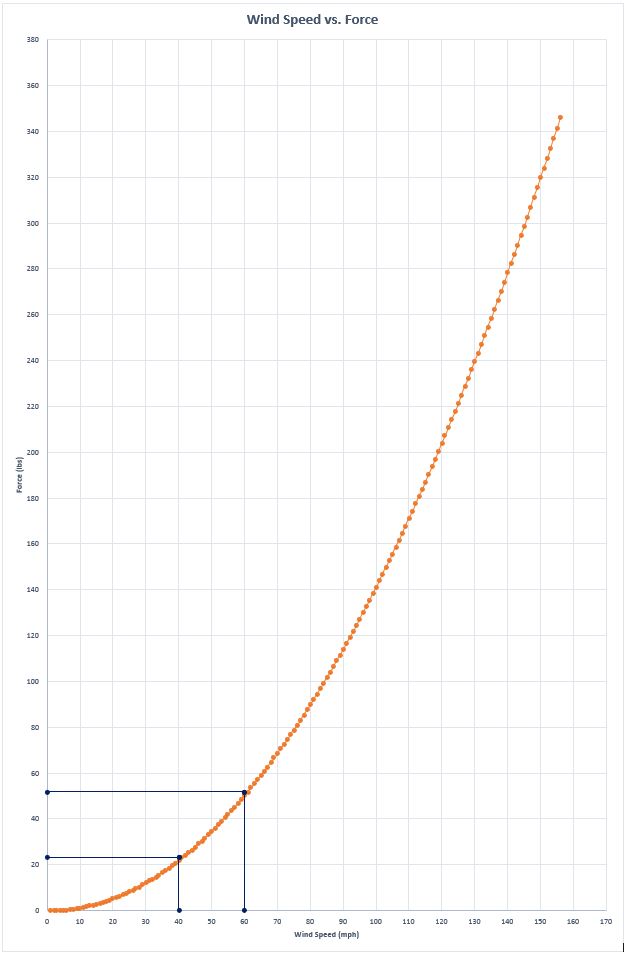DIY Wind Calculation
Curious about how much force they are dealing with? You are in luck! No need to wait for the next hurricane to go see for yourself. Instead, I will help you try to quantify the forces those brave/crazy reporters face while out there amongst the elements.
First, a quick background on wind design. Wind design in our industry is mostly controlled by “ASCE7 Minimum Design Loads and Associated Criteria for Buildings and Other Structures”. In this code you can find a wind speed map that tells you the maximum wind speed required for designs for in your geographic area. For the Texas Gulf Coast, here are the design speeds: [Units: MPH(M/S)]
From those mapped wind speeds, we can calculate what force (in pounds) will be exerted onto an object that we, as engineers, need to account for in our design. Below, I have simplified the force equation found in ASCE7:
- Force = 0.00256*0.6*A*V2*Cd
- 0.00256=Standard coefficient based on density and gravitational acceleration.
- 0.6=ASD load factor for wind
- A=Surface area the wind is blowing against
- V=Wind velocity from map in mph
- Cd=Drag coefficient (Between 2.0 for a flat surface and 0.5 for a rounded, smooth surface)
Now, let’s try to figure out what types of forces are pushing on those reporters in the field. If you look at the wind speed map, you will see that right along the Texas Gulf Coast. We have a design wind speed of about 155mph. I can guarantee you that no reporter will be standing out there in 155mph wind. They usually start standing sideways at about 35 to 40 mph, so let’s use 40 mph for our example. For Surface Area (A), I performed a not-so-scientific calculation, and came up with a surface area of about 7.5ft2 for a person 6ft tall with an average build. For Cd, our last variable, let’s use 1.25, this assumes our reporter has a body that is somewhere between flat and round. To summarize:
- A=7.5ft2 (body surface area)
- V=40mph (wind velocity)
- Cd=1.25 (medium body type, not round, not flat)
If we plug those variables into our original equation, we come up with:
Force = 0.00256*0.6*7.5*402*1.25 = 23lbs
That would make the average person stand a little sideways to keep their center of gravity in the right position in order to remain standing on their feet.
The interesting thing about this equation and the results are that since velocity (V) is squared, as the wind speed increases, the resulting force increases at an exponential rate. So, as you can see from the graph below, an increase in wind speed from 40 mph to 60 mph results in an increase of force from 23 lbs to a force that is almost double, 52 lbs. If you keep going out to our design wind speed of 155 mph, you will see that the force exerted on that reporter would be almost 350 lbs, and he or she would most likely not be within the view of the camera anymore.

When it comes to structures, the wind forces we calculate and design for take into consideration a few other items, and the equation looks slightly different, but the one above will get you in the ballpark. Some other things we account for in a real design are height above ground level, surrounding topographic features, building/structure type, and actual vs. factored load design methods.
Thanks for reading, and now, next time you see a reporter standing sideways you can figure out about how much more wind it will take to literally blow them away!




